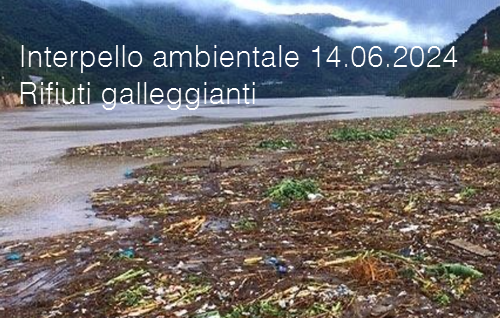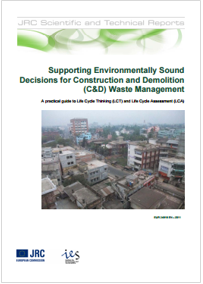Informazione tecnica HSE / 25 ° anno
/ Documenti disponibili:
45.603
/ Documenti scaricati: 34.544.578
/ Documenti scaricati: 34.544.578
What are bio-based products?
Bio-based products are products that are wholly or partly made from biomass.
A bio-based product is normally characterized by the bio-based carbon content or the bio-based content.
The term “bio-based product” is often used to refer to a product which is partly bio-based. In those cases the claim should be accompanied by a quantification of the bio-based content.
These definitions are obtained from the European Standard EN 16575:2014 ‘Bio-based products – Vocabulary’. This standard defines general terms to be used in the field of bio-based products.
European Policy Framework
To implement bio-based products in procurement could support the objectives of the following European Policies:
- The Circular Economy Package (adopted on 2 December 2015) aims to stimulate Europe’s transition towards a circular economy.
- One of the purposes of The Bioeconomy Strategy (adopted on 13 February 2012) is to ensure that fossil fuels are replaced with sustainable natural alternatives as part of the shift to a post-petroleum society.
- Innovation procurement is stimulated through the Public Procurement Directives (adopted January 2014). Through innovation procurement procurers can drive innovation in the bio-based economy from the demand side.
Standards and labels for bio-based content
Standards available to determine bio-based content:
- CEN/TR 16721:2014 Overview of methods
- EN16785-1:2015 Bio-based products - Bio-based content - Part 1: Determination of the bio-based content using the radiocarbon analysis and elemental analysis
- ASTM D6866 Standard Test Methods for Determining the Biobased Content of Solid, Liquid, and Gaseous Samples Using Radiocarbon Analysis Labels available confirming bio-based content:
- OK bio-based label (Vinçotte)
- DIN Geprüft Bio-based label (DIN CERTO)
General Innovation Features
Potential general innovation features of using bio-based products in procurement are related to the bio-based nature of the product. Examples:
- Reduced Greenhouse Gas (GHG) emissions and avoidance of GHG emissions; the GHGs emitted during the production of bio-based products have the potential to be lower than their petrochemical equivalent.
Reduced GHG emissions
Biobased PLA has the potential to reduce GHG emissions approximately 30% compared to its petrochemical counterpart.This comparison takes into account CO2 uptake from the atmosphere, polymer production and incineration but excludes GHG avoidance. Future PLA production could amount to 80% savings.
Other innovation aspects: the following aspects are difficult to address directly in tender specifications. However, they directly answer to the different policy aims expressed in the different EU Policy Communications related to the Resource Efficiency, the Circular Economy and Bioeconomy.
- Reduced dependency on crude oil: biomass replaces crude oil as a base material in bio-based products. The crude oil dependency rate of the countries in the European Union was 88.3% in 2013.
- Driver of innovation; bio-based products in procurement can be a driver of innovation by providing industry with incentives for developing bio-based products.
- Achieving social goals – contribute to political priorities; issues such as rural area development, employment generation and support of small and medium sized business could be addressed through bio-based products in procurement.
- Driver of the secondary material market and circular economy; increased use of secondary materials will improve their value and therefore optimize resource efficiency. Through the shared vision of ‘waste is a resource’ the use of biomass waste and by-products will stimulate the circular economy.
- Improved Resource Efficiency; this is achieved when using by-products and waste streams for the production of bio-based products.
Specific Innovation Features
Specific innovation features of bio-based products in procurement refer to innovative features which the bio-based product has in comparison to its conventional alternative. Examples of such specific innovative features:
- Financial efficiency (lower total cost of ownership); although bio-based products are often more expensive, their specific capabilities may result in more favourable life-cycle costs. Such an innovation feature could be related to the biodegradability capability of some bio-based products. For example, certain products such as geotextiles, or bio-based piping and tubing can be left in the ground when they’re biodegradable but have to be removed when they’re not. This capability has the potential to reduce life-cycle costs.
- (Improved) biodegradability; In some applications the use of biodegradable and/or compostable bio-based products can be of added value:
- When collection and separation of waste products is not viable and one of the waste products is biomass. For example in catering or outdoor events, food waste and crockery/cups/cutlery is collected. By using compostable products, everything can together be processed for compost.
- Lubricants can leak from the structure they are applied to and spill into the environment. By using biodegradable lubricants, the environmental impact is reduced.
- The use of products which remain in the soil, such as permanent shuttering and certain anchoring systems for trees. By using biodegradable products the presence of non-biodegradable materials in the soil is reduced.
Biodegradability and compostability
Biodegradation is a natural chemical process in which materials are being transformed into natural substances such as water, carbon and biomass with the help of microorganisms. Compostability is a characteristic of a product that enables biodegradation under specific conditions (i.e. a certain temperature, timeframe, etc.).
Available standards to determine biodegradation/compostability:
- EN 13432:2000 Requirements for packaging recoverable through composting and biodegradation
- NF T51-800:2015-11: Plastics – Specifications for plastics suitable for home composting
- ISO 17556:2012 Plastic – Determination of the ultimate aerobic biodegradability of plastic materials in soil
- ASTM D5988-12 Standard test method for determining aerobic biodegradation of Plastic Materials in Soil
Organisations could consider bio-based products in procurement if they would benefit from one or more of the capabilities attributed to the bio-based product, for example:
- An erosion mat made from sheep wool has improved water retention capabilities, which in water constraint areas might lead to improved water use efficiency and increased yields.
- A geotextile which is lighter because the bio-based PLA is lighter than conventionally used polypropylene. This reduced transportation and application costs.
- Depending on the application, bio-based lubricants could improve safety of use as they have a higher flashpoint, constant viscosity and less oil mist and vapour emissions
- Examples of bio-based coatings which contain no VOCs have been found. This reduces human health impact and climate change impact.
Potential Sustainability Issues
Although bio-based products potentially have different capabilities with potentially innovative features, the following aspects should be kept in mind
- Environmental impact over the life cycle of the product (this could be determined through Life Cycle Assessment in accordance with ISO 14040) and;
- Sustainable sourcing of the input material (this could be assessed in accordance with the sustainability criteria for bio-based products from EN 16751 in combination with CEN/TR 16957 - Bio-based products - Guidelines for Life Cycle Inventory (LCI) for the End-of-life phase).
Autore: Royal HaskoningDHV.
Fonte Commissione Europea

ID 22090| 19.06.2024 / In allegato Testo interpello Ambientale
L’art. 27 del decreto-legge n. 77 del 31...

Schema Linee guida inerenti Applicazione dei Criteri Ambientali Minimi di cui al decreto del Ministro dell’ambiente e della tutela del territorio e de...

A practical guide to Life Cycle Thinking (LCT) and Life Cycle Assessment (LCA)
This guidance document pr...
Testata editoriale iscritta al n. 22/2024 del registro periodici della cancelleria del Tribunale di Perugia in data 19.11.2024